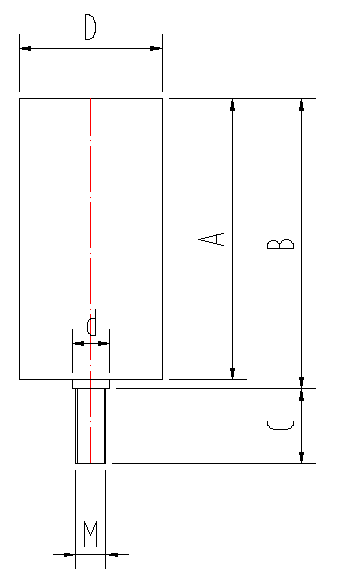 Afrikaans
Afrikaans  Albanian
Albanian  Amharic
Amharic  Arabic
Arabic  Armenian
Armenian  Azerbaijani
Azerbaijani  Basque
Basque  Belarusian
Belarusian  Bengali
Bengali  Bosnian
Bosnian  Bulgarian
Bulgarian  Catalan
Catalan  Cebuano
Cebuano  Corsican
Corsican  Croatian
Croatian  Czech
Czech  Danish
Danish  Dutch
Dutch  English
English  Esperanto
Esperanto  Estonian
Estonian  Finnish
Finnish  French
French  Frisian
Frisian  Galician
Galician  Georgian
Georgian  German
German  Greek
Greek  Gujarati
Gujarati  Haitian Creole
Haitian Creole  hausa
hausa  hawaiian
hawaiian  Hebrew
Hebrew  Hindi
Hindi  Miao
Miao  Hungarian
Hungarian  Icelandic
Icelandic  igbo
igbo  Indonesian
Indonesian  irish
irish  Italian
Italian  Japanese
Japanese  Javanese
Javanese  Kannada
Kannada  kazakh
kazakh  Khmer
Khmer  Rwandese
Rwandese  Korean
Korean  Kurdish
Kurdish  Kyrgyz
Kyrgyz  Lao
Lao  Latin
Latin  Latvian
Latvian  Lithuanian
Lithuanian  Luxembourgish
Luxembourgish  Macedonian
Macedonian  Malgashi
Malgashi  Malay
Malay  Malayalam
Malayalam  Maltese
Maltese  Maori
Maori  Marathi
Marathi  Mongolian
Mongolian  Myanmar
Myanmar  Nepali
Nepali  Norwegian
Norwegian  Norwegian
Norwegian  Occitan
Occitan  Pashto
Pashto  Persian
Persian  Polish
Polish  Portuguese
Portuguese  Punjabi
Punjabi  Romanian
Romanian  Russian
Russian  Samoan
Samoan  Scottish Gaelic
Scottish Gaelic  Serbian
Serbian  Sesotho
Sesotho  Shona
Shona  Sindhi
Sindhi  Sinhala
Sinhala  Slovak
Slovak  Slovenian
Slovenian  Somali
Somali  Spanish
Spanish  Sundanese
Sundanese  Swahili
Swahili  Swedish
Swedish  Tagalog
Tagalog  Tajik
Tajik  Tamil
Tamil  Tatar
Tatar  Telugu
Telugu  Thai
Thai  Turkish
Turkish  Turkmen
Turkmen  Ukrainian
Ukrainian  Urdu
Urdu  Uighur
Uighur  Uzbek
Uzbek  Vietnamese
Vietnamese  Welsh
Welsh  Bantu
Bantu  Yiddish
Yiddish  Yoruba
Yoruba  Zulu
Zulu conveyor pulley lagging
Understanding Conveyor Pulley Lagging Importance, Types, and Applications
Conveyor systems play a crucial role in various industries, facilitating the movement of materials over short and long distances. A critical component of these systems is the conveyor pulley, which supports and drives the conveyor belt. To ensure optimal performance and longevity of conveyor pulleys, lagging is employed. Lagging refers to the surface treatment or covering of the pulley that enhances its functionality and extends its lifespan.
One of the primary reasons for using conveyor pulley lagging is to increase the friction between the pulley and the conveyor belt
. This enhanced friction ensures that there is adequate grip, preventing slippage, especially under heavy loads or conditions where the belt may experience significant tension. Without proper lagging, the risk of slippage increases, which can lead to inefficient material transport, increased wear on the belt, and potential damage to the conveyor system.There are several types of pulley lagging materials available, each suited for specific applications. The most common materials include rubber and ceramic. Rubber lagging is often favored for its excellent grip and flexibility, making it suitable for a wide range of operating conditions. It can absorb impacts and vibrations, thereby reducing stress on the pulley and the belt. On the other hand, ceramic lagging is employed in high-friction applications where wear resistance is critical. Ceramic materials can withstand harsh conditions, making them ideal for environments with heavy loads and abrasive materials.
conveyor pulley lagging

The installation of pulley lagging should be conducted with care to ensure maximum performance. Proper alignment and adherence to the pulley surface are essential to avoid issues such as uneven wear and premature deterioration. Regular maintenance checks are also crucial. Over time, lagging can wear down due to constant contact with the belt and abrasive materials. Monitoring the condition of the lagging and replacing it when necessary can prevent costly downtime and repairs.
Moreover, conveyor pulley lagging also plays a significant role in enhancing safety in the workplace. By reducing the likelihood of slippage, the risk of accidents caused by material spillage is minimized. Additionally, well-maintained lagging contributes to the smooth operation of conveyor systems, which is essential in fast-paced industrial environments.
In conclusion, conveyor pulley lagging is an integral aspect of conveyor system operation. By improving grip, reducing wear, and enhancing safety, lagging ensures the efficient and reliable movement of materials across various industries. Selecting the appropriate type of lagging material and regular maintenance are key factors that contribute to the effectiveness of conveyor pulleys. As industries continue to evolve and demand higher efficiency, the importance of solutions like conveyor pulley lagging will undoubtedly grow, affirming its place as a critical component in modern material handling systems.
-
Revolutionizing Conveyor Reliability with Advanced Rubber Lagging PulleysNewsJul.22,2025
-
Powering Precision and Durability with Expert Manufacturers of Conveyor ComponentsNewsJul.22,2025
-
Optimizing Conveyor Systems with Advanced Conveyor AccessoriesNewsJul.22,2025
-
Maximize Conveyor Efficiency with Quality Conveyor Idler PulleysNewsJul.22,2025
-
Future-Proof Your Conveyor System with High-Performance Polyurethane RollerNewsJul.22,2025
-
Driving Efficiency Forward with Quality Idlers and RollersNewsJul.22,2025





























